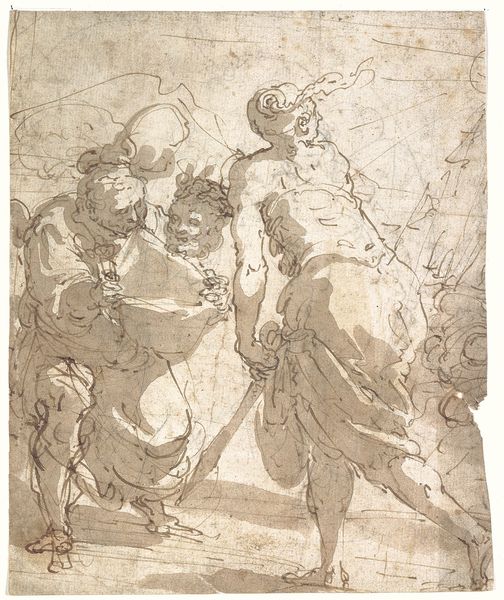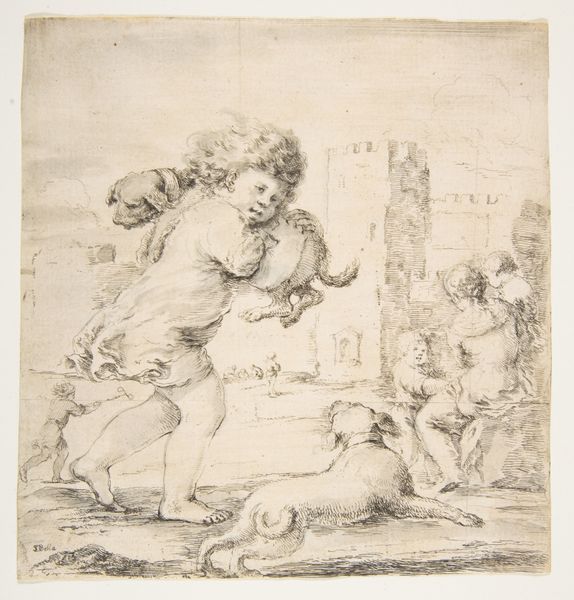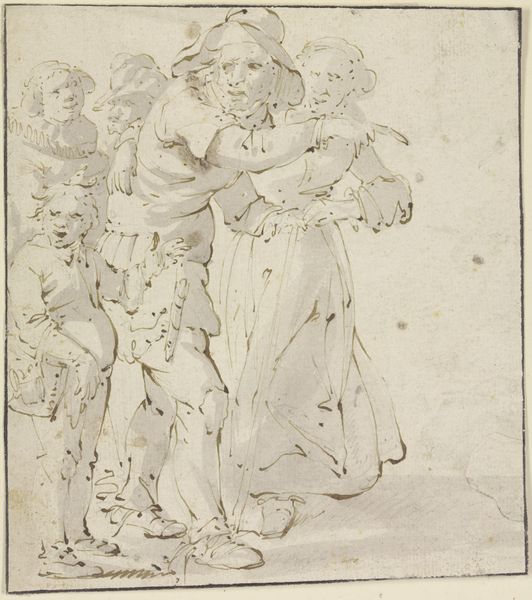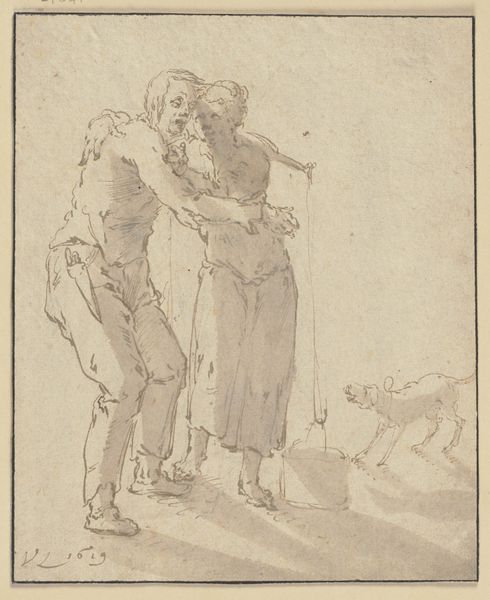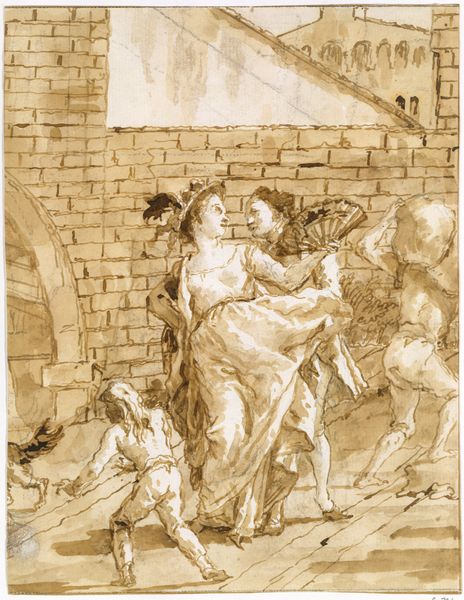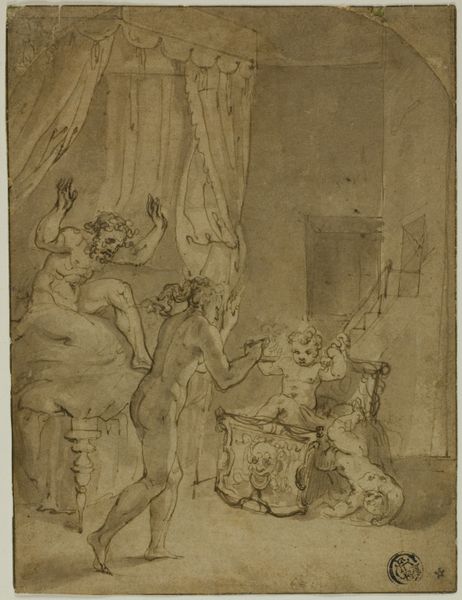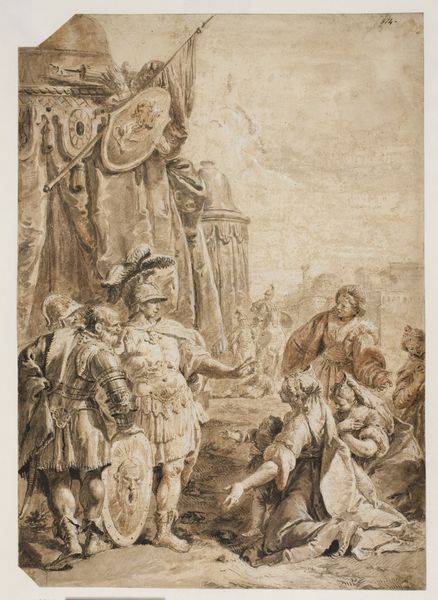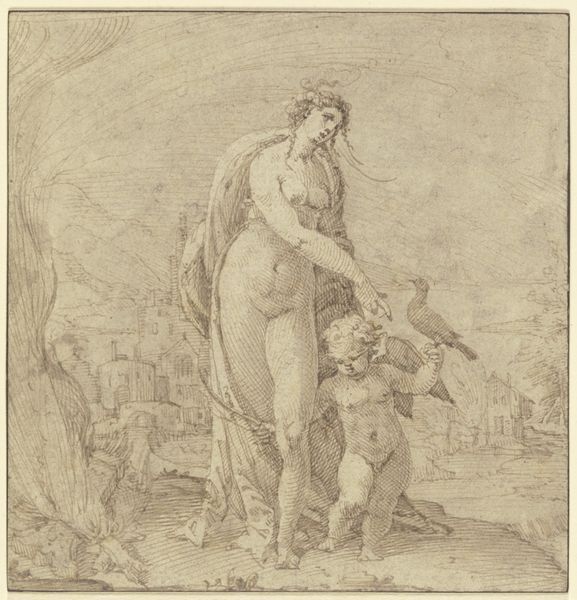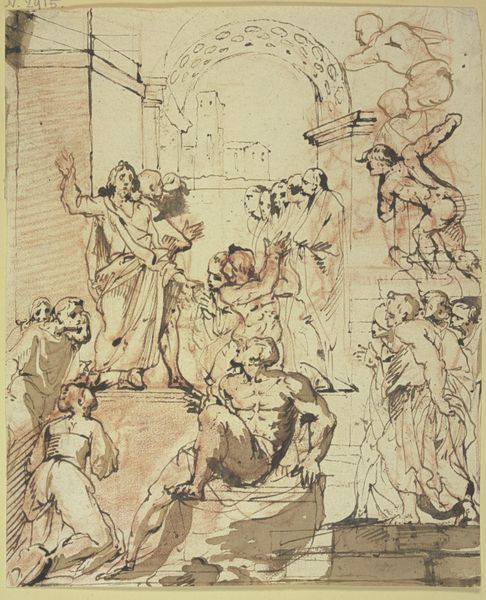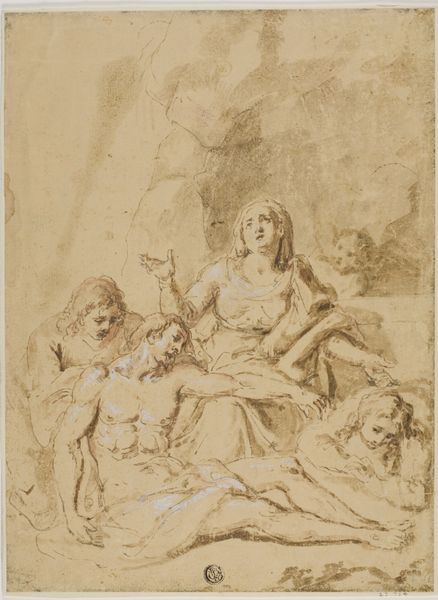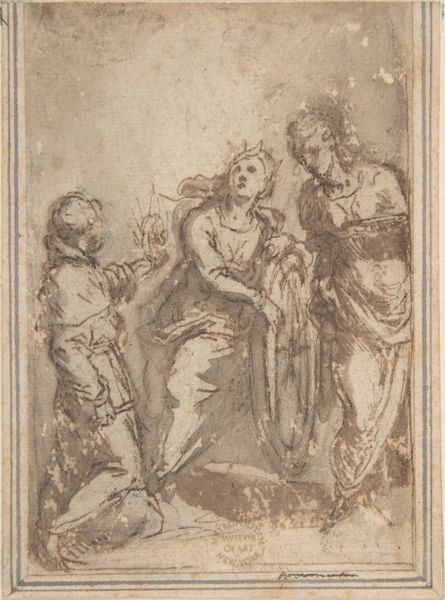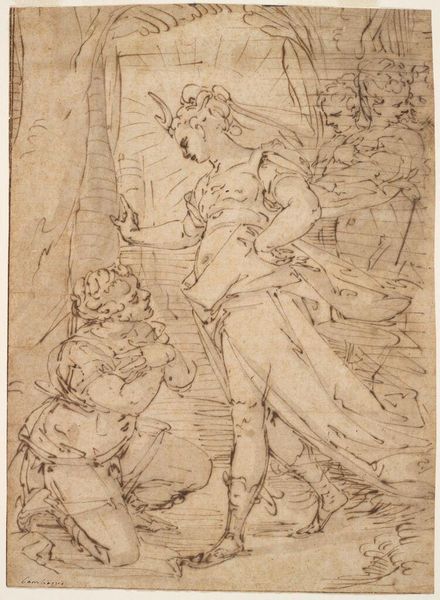
drawing, ink
#
drawing
#
figuration
#
11_renaissance
#
ink
#
coloured pencil
#
13_16th-century
#
watercolour illustration
#
history-painting
Copyright: Public Domain
Editor: Here we have “Enthauptung der Heiligen Katharina”— or, "The Beheading of Saint Catherine" by Jacopo Chimenti, also known as Da Empoli. It looks like an ink drawing. It's unsettling, the composition… I can't quite put my finger on why. What do you see in this piece that I might be missing? Curator: This work operates within a powerful visual and historical context. Consider the role of the Städel Museum, a public institution, in displaying this depiction of religious violence. What impact might the display of such an image have on a modern audience? Editor: That's an interesting point. So the museum's choice, is it almost…political? Curator: Absolutely. Depictions of martyrdom were highly charged in the Renaissance and Reformation, especially because of competing claims on religious authority, and that history follows the work into our own time. The violence enacted on Saint Catherine—the brutal, casual way the executioner hoists the sword—speaks to broader themes of power and the suppression of dissenting voices. Consider who controlled the narratives and images of saints and why. How might such control reinforce existing power structures? Editor: So it’s not just about the literal scene, but also the political and social messages embedded within it? It challenges my understanding of religious art as purely devotional. Curator: Exactly. This piece compels us to examine how art functioned within complex social, cultural, and religious landscapes, both then and now. And of how we encounter this history in institutions with their own agendas. Editor: I never thought about the political side of religious artworks. This insight gave me so much to think about regarding the politics of display! Curator: And hopefully inspires a deeper interrogation into the institutions we trust to teach us.
Comments
No comments
Be the first to comment and join the conversation on the ultimate creative platform.
